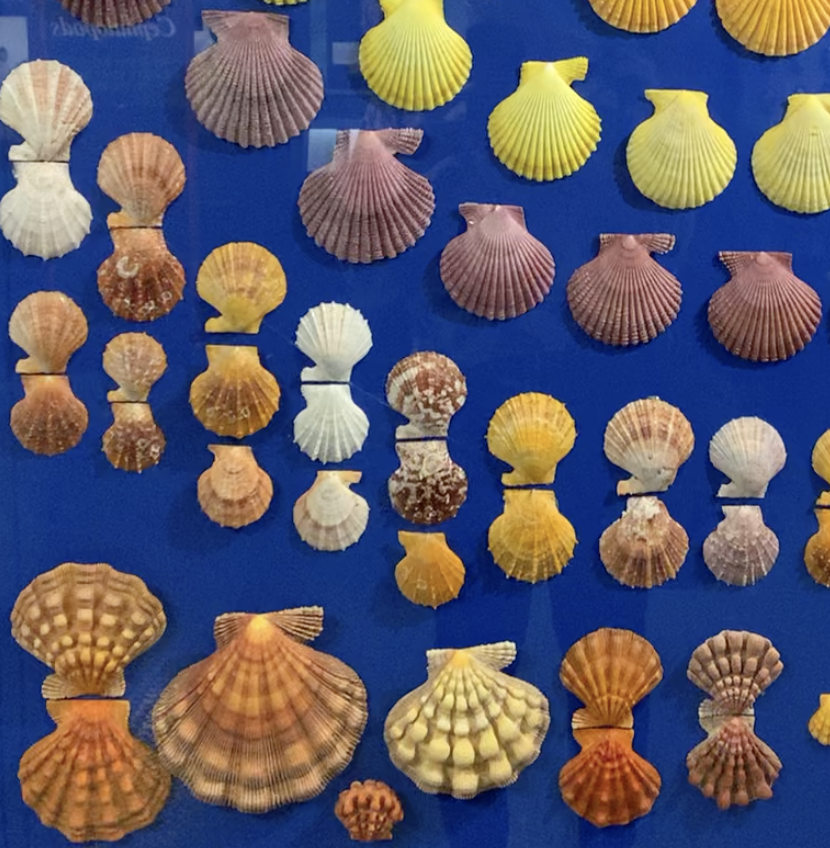Seashell Patterns make a fun mathematical study for children and grownups alike. One of the fun things we can do with seashells is to use them to practice studying patterns in nature. And we can look at them to think about different kinds of patterns that exist in the world.
A pattern that follows particular rules is called an algorithm. The ability to recognize, understand, and create algorithms is what makes you a good mathematician, a great computer software engineer, a poet, or a psychologist. If you understand an algorithm, you can solve a Rubik’s cube, bake cookies from a recipe, and even make predictions about who is going to win a tennis tournament. Scientists who study seashells for a living are so fascinated with algorithms in seashells, they write books about them. Take a little time for some up-close observation and you’ll see some amazing patterns too!
The Sierpinski Triangle:
The Sierpinski triangle is named after the Polish mathematician Wacław Sierpiński. You can make one by taking an equilateral triangle and then cutting smaller and smaller triangles out of the center of each triangle:



Now that you know what a Sierpinski Triangle is, can you find an example reminiscent of this pattern in any of the seashells you have in your collection?


Logarithmic Spiral
If you’ve ever seen a nautilus shell that has been sliced open, you’ve seen some intricate pattern-making. According to writers at science.org, “Shell spirals have an elegant geometry, where for any rotation angle, the distance from the origin of the spiral increases by a fixed amount. This is known as a logarithmic spiral.”


You’ll see logarithmic spirals in many more of nature’s creations, including everything from curling leaves and vines, to cloud formations inside of a hurricane, to the spiral shape of certain galaxies.
 Nautilus shells on display at the Bailey-Matthews National Shell Museum in Sanibel, Florida
Nautilus shells on display at the Bailey-Matthews National Shell Museum in Sanibel, Florida
Patterns in Ridges
One really fun thing to do is take a closer look at the lines and ridges on the outside of a shell—a scallop shell for example. They are so precise and even it’s as if someone measured out every single one. Some bivalve shells fit together so perfectly, that even the craftiest predators can’t find a way to get inside

You’ll see bands of color around some shells that are so beautiful and precise that it’s hard to imagine how a small animal with no bones and no brain to speak of could have created them so perfectly. How a mollusk does it is something scientists are only beginning to discover. Now that you know how to take a closer look, you’ll have a new appreciation for the humble mollusk!

The natural colors in shells occur for many reasons, including the diet of the mollusk, the environment where they live, and more. The fleshy mantle of the living mollusk produces the shell.

